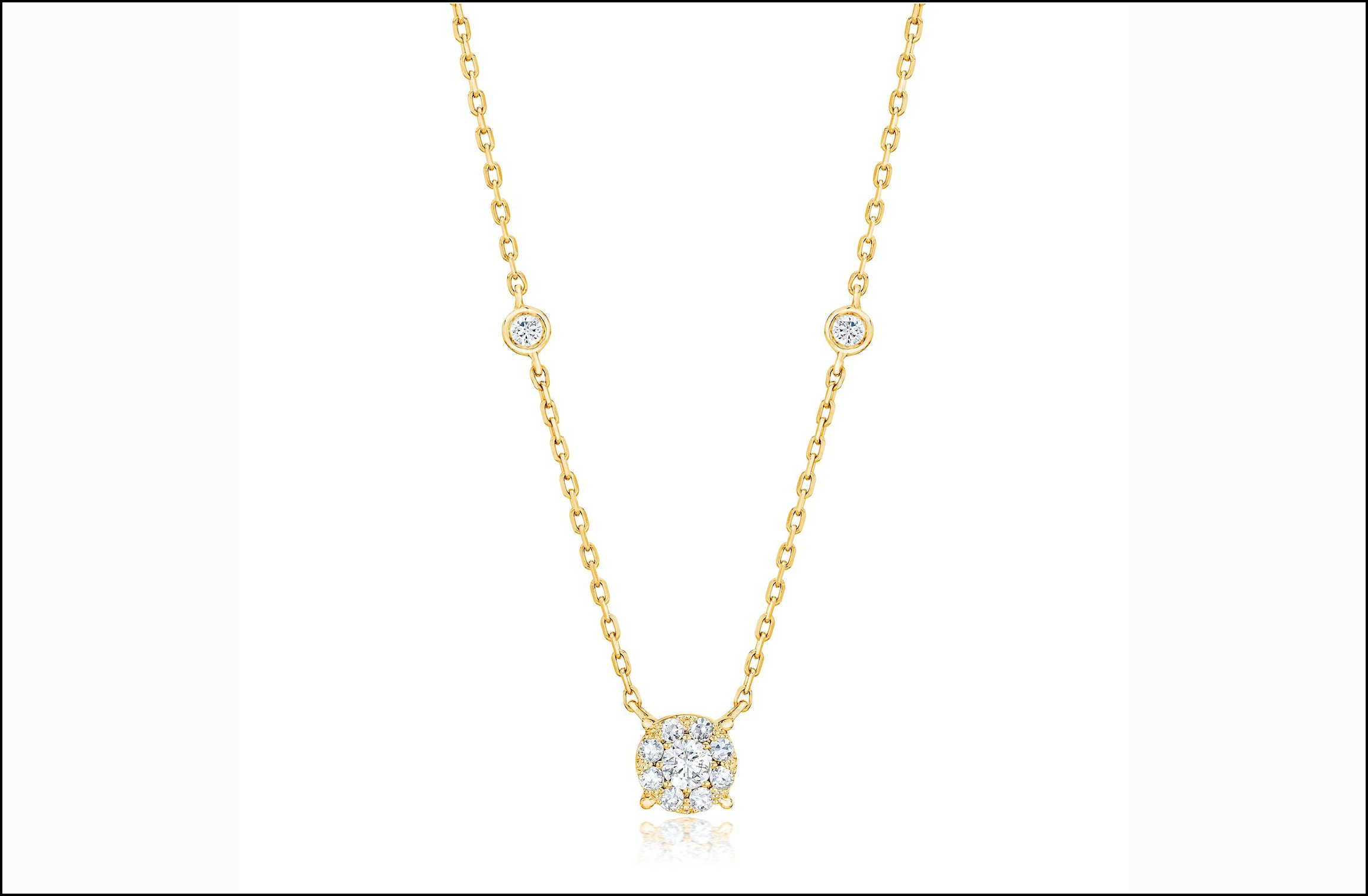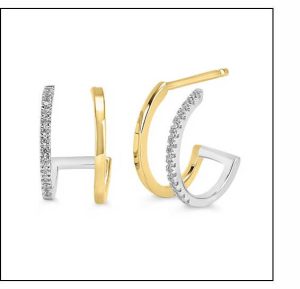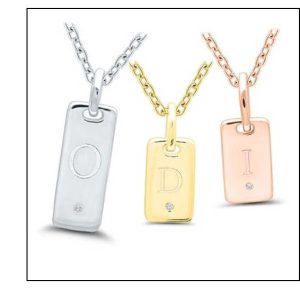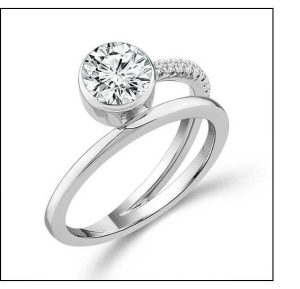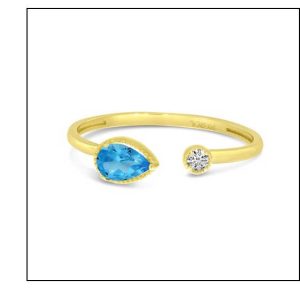Price Point Pretties
Research shows that the average price per unit sold in jewelry stores is less than $1,500—a price with appeal to emerging jewelry collectors like Gen Z. Analysis of “The Plumb Club Industry and Market Insights 2023” report confirms that jewelry interest from that generation and Millennials “are advancing to increasingly relevant consumers with high demands, increasing disposable income, and new perceptions of jewelry as a status symbol.” What this means for jewelers is clear: have plenty of entry-level-price jewelry options on hand.
Plumb Club Members agree that a good place to start building a jewelry wardrobe is with basics—studs, hoops, pendant necklaces, and personalized and stacking styles. Stacking and layering these staples paves the way for stylish clients and multiple sales.
For starter collections, Theresa Namie, merchandise manager at Ostbye, likes hoops and studs—“These can have style, they don’t have to be plain,” she says—among other items. “Three pendants can be layered together or worn separately, and stackable rings and a flexible bracelet tie it all together,” she adds.
Valerie Fletcher, vice president of design and product development at ODI, agrees.
“Sometimes you need stacks of bangles, and sometimes you need a simple gold hoop,” she says, advising shoppers to spend the most on everyday classics, less on trendy styles. “Splurge on distinctive pieces that have a special meaning or story and are uniquely you,” she suggests. “Over time, you build a collection of meaningful and versatile jewelry.”
Ostbye has birthstone options under $1,500 retail, but it also has anniversary bands and fashion-forward numbers. “We try to feature the price points in our holiday flyer for an easy, successful holiday season,” says Namie.
One item that customers should look for once that flyer goes to press: the brand’s Double Row earrings in two-tone 10k gold with diamonds. “They give the illusion of wearing two earrings,” she explains.
At Brevani, many entry-level-price jewels are made in 14k gold with colored gemstones, like birthstones, but the designs are anything but old-fashioned.
“We’re finding that the next generation wants something new and exciting,” says Allison Peck, director of operations. “They don’t want what their mothers or grandmothers wore, they want something different.”
Within her line, that can mean open-style Toi et Moi rings with garnet, opal, topaz, or peridot and a diamond accent.
In IDD Luxe’s SkySet collection, shoppers can nab lab-grown diamond designs in 14k gold for less than $1,500. For sure, the firm aims to offer big looks to Gen Z customers at affordable price points.
“Younger generations just don’t care as much as Baby Boomers and Gen Xers that the diamonds weren’t grown in the earth but in a lab,” observes Kendra Bridelle, president.
With all these great price-point options, don’t forget to drive home the training retailers need to shop these styles to entry-level buyers. Bridelle’s biggest tip? “Always show how to layer!” she insists.
“We train retailers how to accessorize their clients,” she continues. “Never stop at one sale. We also teach them that if they don’t offer specific categories, they will lose the next-generation customer.”
Ostbye also works hard to help its merchants. “Social media is the easiest way to reach this generation, and we’re constantly working to create good content,” she says.
Experiences in store can’t hurt, either—particularly ones that motivate shoppers to explore what speaks to them. To wit, encourage clients to choose pieces that resonate with their personal style—that make them feel “confident, unique, stylish, and fun,” adds Fletcher. The theme, after all, is you. “How do you want your jewelry to make you feel?” queries Fletcher.








